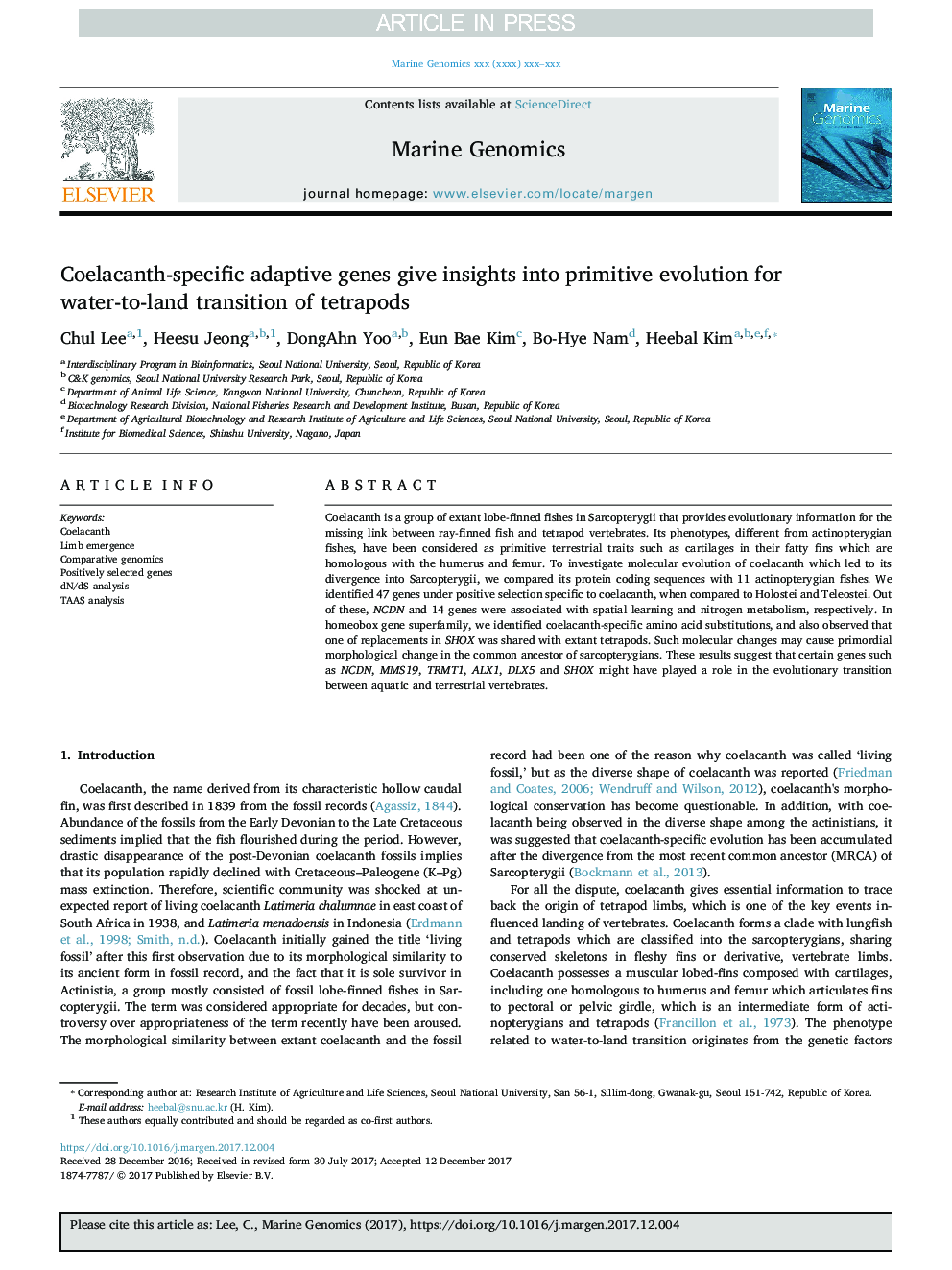| Article ID | Journal | Published Year | Pages | File Type |
|---|---|---|---|---|
| 8387932 | Marine Genomics | 2018 | 7 Pages |
Abstract
Coelacanth is a group of extant lobe-finned fishes in Sarcopterygii that provides evolutionary information for the missing link between ray-finned fish and tetrapod vertebrates. Its phenotypes, different from actinopterygian fishes, have been considered as primitive terrestrial traits such as cartilages in their fatty fins which are homologous with the humerus and femur. To investigate molecular evolution of coelacanth which led to its divergence into Sarcopterygii, we compared its protein coding sequences with 11 actinopterygian fishes. We identified 47 genes under positive selection specific to coelacanth, when compared to Holostei and Teleostei. Out of these, NCDN and 14 genes were associated with spatial learning and nitrogen metabolism, respectively. In homeobox gene superfamily, we identified coelacanth-specific amino acid substitutions, and also observed that one of replacements in SHOX was shared with extant tetrapods. Such molecular changes may cause primordial morphological change in the common ancestor of sarcopterygians. These results suggest that certain genes such as NCDN, MMS19, TRMT1, ALX1, DLX5 and SHOX might have played a role in the evolutionary transition between aquatic and terrestrial vertebrates.
Keywords
Related Topics
Physical Sciences and Engineering
Earth and Planetary Sciences
Earth and Planetary Sciences (General)
Authors
Chul Lee, Heesu Jeong, DongAhn Yoo, Eun Bae Kim, Bo-Hye Nam, Heebal Kim,
